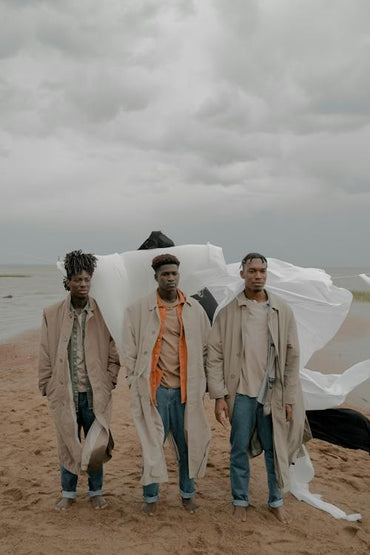What is the Difference between an Overcoat and a Blazer?
Posted by DANISH FAREED

Fashion is a realm where subtleties matter, and the distinctions between various garments contribute to one's polished appearance. Two staples of men's outerwear, the overcoat and the blazer, often find themselves in the same conversation.
However, each serves a unique purpose and exhibits distinct characteristics. Let's delve into the nuances that set these two wardrobe essentials apart.
Overcoat: A Winter Essential
Definition and Purpose
An overcoat is a long, heavy coat designed primarily for warmth during cold weather. Unlike other coats that may be worn as a fashion statement, the overcoat is specifically crafted to provide insulation against chilly temperatures. It typically extends below the knee and may feature additional lining for added warmth.
Fabric and Style
Overcoats are traditionally made from wool, cashmere, or a blend of these materials. The emphasis is on durability and insulation. The style is often straightforward, with clean lines and minimal embellishments. Overcoats come in various styles, such as single-breasted or double-breasted, providing options for different occasions and preferences.
Versatility and Formality
The overcoat is inherently formal and is commonly associated with business attire or dressier occasions. It complements suits and formal wear impeccably. Its length and heavier fabric make it less suitable for casual settings, reinforcing its role as a winter wardrobe staple for more formal or professional occasions.
Blazer: A Versatile Wardrobe Essential
Definition and Purpose
A blazer, on the other hand, is a versatile, mid-length jacket that serves as a middle ground between casual and formal wear. It is shorter than an overcoat and typically features a tailored fit. Blazers are known for their versatility, seamlessly transitioning from formal to smart-casual settings.
Fabric and Style
Blazers come in a myriad of fabrics, including wool, cotton, and blends. The emphasis here is on a polished appearance rather than insulation. Blazers often feature distinct details such as patch or flap pockets, contrasting buttons, and a variety of lapel styles, adding a touch of personality and flair to the garment.
Versatility and Formality
What sets the blazer apart is its ability to effortlessly adapt to different dress codes. While it can be paired with dress trousers for a more formal look, it also pairs well with jeans for a smart-casual vibe. The blazer's versatility makes it a wardrobe essential, suitable for a range of occasions from office meetings to dinner dates.
Key Differences: A Recap
Purpose and Seasonality:
- Overcoats are designed for warmth during cold seasons.
- Blazers serve a more versatile purpose and are not specifically designed for insulation.
Length and Fit:
- Overcoats are typically long, extending below the knee, emphasizing coverage and warmth.
- Blazers are mid-length, offering a tailored fit that accentuates the wearer's silhouette.
Formality:
- Overcoats are inherently formal and are often associated with business or dressier occasions.
- Blazers span a broader spectrum, ranging from formal to smart-casual, making them more adaptable to various settings.
Conclusion: Choosing the Right Garment for the Occasion
Understanding the distinctions between overcoats and blazers empowers individuals to make informed wardrobe choices. While the overcoat excels in providing warmth and a formal aesthetic during colder months, the blazer stands out for its versatility and ability to bridge the gap between formal and casual attire.
Ultimately, having both in one's wardrobe ensures a comprehensive selection suitable for diverse occasions and style preferences.






















